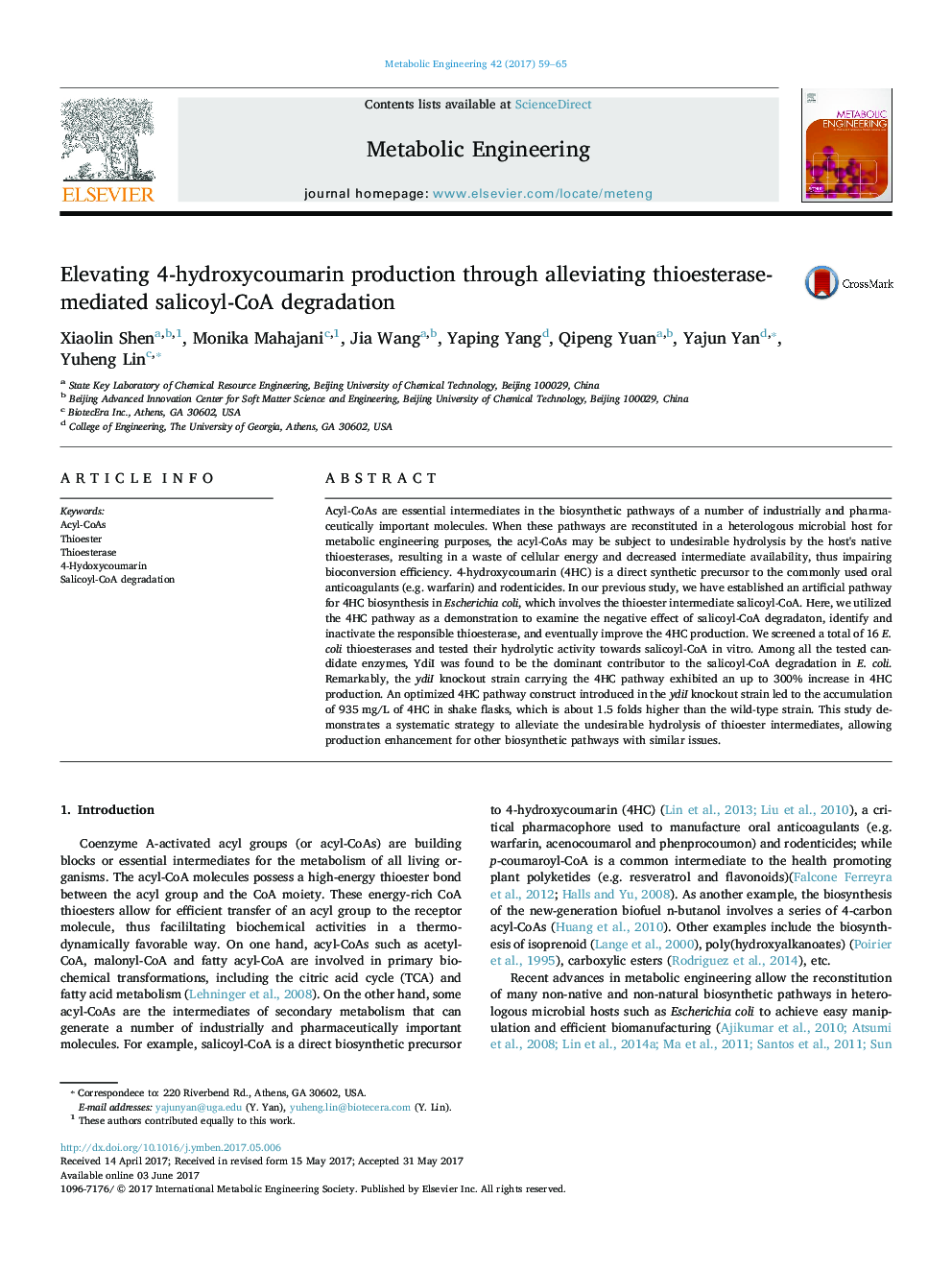| Article ID | Journal | Published Year | Pages | File Type |
|---|---|---|---|---|
| 6452736 | Metabolic Engineering | 2017 | 7 Pages |
â¢We observed the negative effect of salicoyl-CoA hydrolysis in 4HC biosynthesis.â¢YdiI was proven the dominant contributor to salicoyl-CoA degradation in E. coli.â¢YdiI knockout led to a 300% increase in 4HC production and the highest titer so far.â¢A systematic strategy to alleviate undesirable hydrolysis of thioester intermediate.
Acyl-CoAs are essential intermediates in the biosynthetic pathways of a number of industrially and pharmaceutically important molecules. When these pathways are reconstituted in a heterologous microbial host for metabolic engineering purposes, the acyl-CoAs may be subject to undesirable hydrolysis by the host's native thioesterases, resulting in a waste of cellular energy and decreased intermediate availability, thus impairing bioconversion efficiency. 4-hydroxycoumarin (4HC) is a direct synthetic precursor to the commonly used oral anticoagulants (e.g. warfarin) and rodenticides. In our previous study, we have established an artificial pathway for 4HC biosynthesis in Escherichia coli, which involves the thioester intermediate salicoyl-CoA. Here, we utilized the 4HC pathway as a demonstration to examine the negative effect of salicoyl-CoA degradaton, identify and inactivate the responsible thioesterase, and eventually improve the 4HC production. We screened a total of 16 E. coli thioesterases and tested their hydrolytic activity towards salicoyl-CoA in vitro. Among all the tested candidate enzymes, YdiI was found to be the dominant contributor to the salicoyl-CoA degradation in E. coli. Remarkably, the ydiI knockout strain carrying the 4HC pathway exhibited an up to 300% increase in 4HC production. An optimized 4HC pathway construct introduced in the ydiI knockout strain led to the accumulation of 935Â mg/L of 4HC in shake flasks, which is about 1.5 folds higher than the wild-type strain. This study demonstrates a systematic strategy to alleviate the undesirable hydrolysis of thioester intermediates, allowing production enhancement for other biosynthetic pathways with similar issues.
